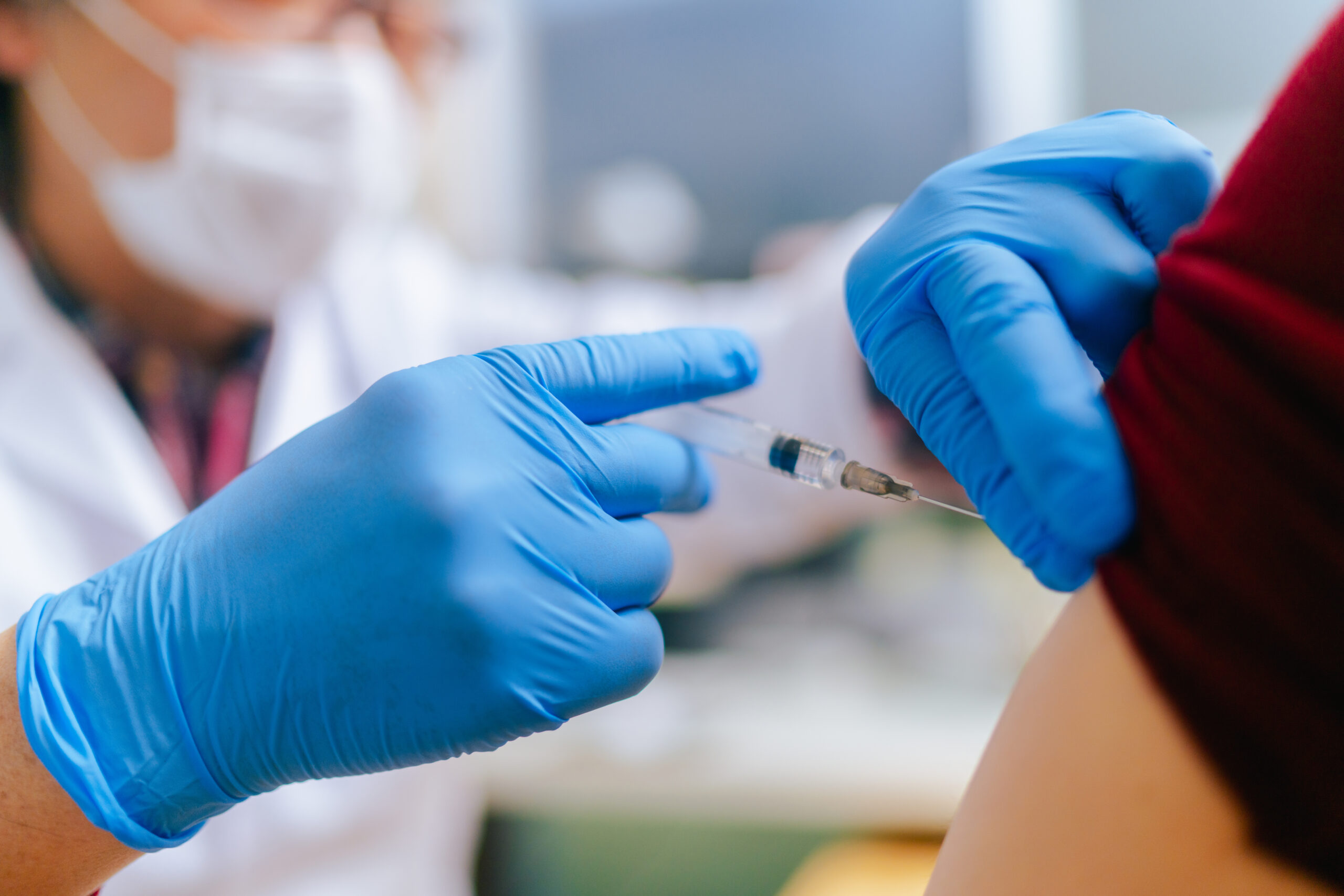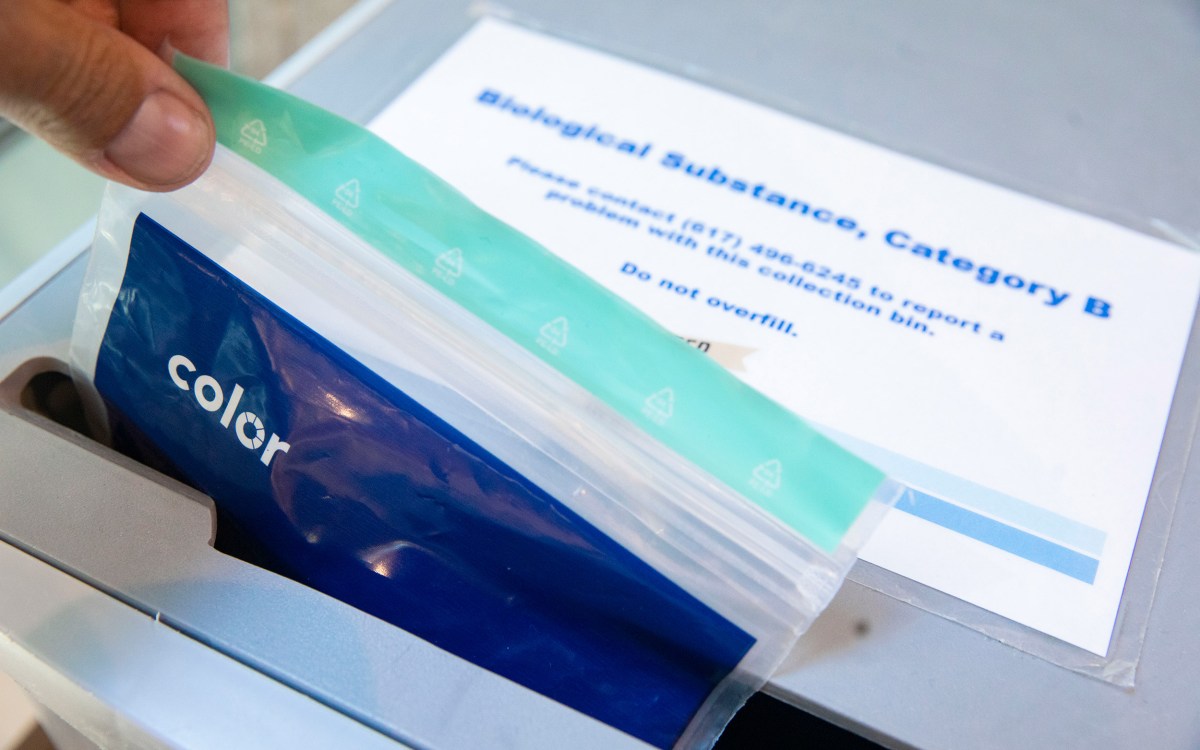
The rise of subvariants BA.4 and BA.5 “is reminiscent … of the Omicron wave, possibly even taking off faster,” said infectious disease specialist Jacob Lemieux at this week’s media briefing.
iStock
Subvariants cause for alarm, hybrid immunity hard to beat
Harvard scientists give their read on recent COVID data from the U.S. and South Africa
Jacob Lemieux, an infectious disease specialist at Massachusetts General Hospital and instructor at Harvard Medical School, said this week that recent COVID data out of South Africa is “alarming,” as the Omicron subvariants BA.4 and BA.5 appear to be causing an exponential rise in positivity rates — the percentage of all tests that are positive — and already make up more than 50 percent of cases.
“You start to see a rise that is reminiscent, in its numbers, its timing, and its test positivity rate, of the Omicron wave, possibly even taking off faster,” Lemieux said during a media briefing Tuesday by the Massachusetts Consortium on Pathogen Readiness. “It really is alarming and suggests that we probably will see a fifth wave in South Africa. The extent of this wave is not yet clear.”
Lemieux, who is the co-lead of MassCPR’s viral variants program, said it’s too early to tell whether the subvariants will cause a rise in hospitalizations and deaths, or, like the BA.2 subvariant that eclipsed the original Omicron in South Africa and the U.S., simply replace prior versions of the virus without causing a rise in serious illness.
“There’s a lot more population-level immunity, so perhaps it may just be a wave in numbers, not morbidity and mortality,” he said. “But it does have a flavor of ‘Here we go again.’”
Lemieux’s comments came amid generally positive news on the virus in the U.S. Anthony Fauci, the president’s top medical advisor, on Tuesday told media outlets that the nation has escaped COVID’s pandemic phase and appears to be decelerating toward endemic disease, where cases occur but hospitalizations and mortality remain relatively low. (Fauci clarified his remarks the next day, saying that he meant the “acute component of the pandemic.”)
“Even folks who’ve gotten two shots … don’t seem to do as well at resisting COVID-19 as folks who had hybrid immunity due to infection either before or after vaccination.”
Galit Alter, Harvard Medical School
Meanwhile, new Centers for Disease Control and Prevention research shows that nearly 60 percent of Americans had been infected with SARS-CoV-2 as of February. The study captured the impact of Omicron’s initial wave, which pushed the percentage of Americans with antibodies due to coronavirus infection from 34 percent in December to 58 percent in February.
The findings suggest at least some naturally derived immunity in most Americans. The CDC’s director, Rochelle Walensky, a professor of medicine on leave from HMS and Massachusetts General Hospital, said that immunity from vaccination appears to be superior to that gained from exposure, so the agency is still recommending vaccination for people who have had COVID.
Doing so may confer significant benefits in immunity, according to Galit Alter, a professor of medicine at HMS and MGH who spoke at the MassCPR briefing. Alter cited persuasive evidence that “hybrid immunity” — gained from a variety of sources, such as infection and vaccination, or vaccination and boosting with a different vaccine — provides stronger protection than either natural immunity or vaccination-derived immunity alone.
“Hybrid immunity is really the most robust correlate of protection against severe disease and death,” Alter said. “Even folks who’ve gotten two shots … don’t seem to do as well at resisting COVID-19 as folks who had hybrid immunity due to infection either before or after vaccination. There is something special about seeing the virus in its entirety.”
Though the country’s pandemic outlook remains favorable, there are some areas of concern, Walensky said. Cases have risen slightly since reaching a low of around 25,000 in early April, with the seven-day moving average topping 45,000 early this week. Hospitalizations have also ticked upward, from a post-Omicron low of 0.43 per 100,000 on April 8 to 0.54 per 100,000 this week. Vaccination rates have slowly climbed, with 82.4 percent of Americans 5 or older now having received at least one dose. Among the most vulnerable population, age 65 or older, that figure is 95 percent, with 90.1 percent of the group now fully vaccinated.








